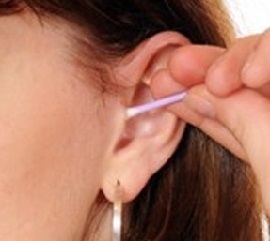 Otitis is an inflammation and swelling of the auricle. It can be chronic or acute, purulent or catarrhal. Most often this disease occurs in children. According to statistics, approximately 80% of children under 3 years of age have had otitis media at least once.
Otitis is an inflammation and swelling of the auricle. It can be chronic or acute, purulent or catarrhal. Most often this disease occurs in children. According to statistics, approximately 80% of children under 3 years of age have had otitis media at least once.
There is pain in the ear (pulsating, shooting, aching), fever, hearing impairment, noise in the ears, mucopurulent discharge from the external auditory canal.
Otitis is the most common cause of hearing loss (decreased hearing). This disease affects people of all ages, but children are most susceptible to an ailment, because of the peculiarities of the anatomical structure of the Eustachian tube.
Causes of otitis media
Inflammatory process at the level of the middle ear is most often secondary. This means that, initially the infection penetrates into the tympanum from other departments communicating with it. Secretory otitis media is observed when a fluid produced by a cold or allergic reaction penetrates into the middle ear through the Eustachian tube.
Depending on the location of the pathological processthree forms of otitis:
- interior;
- outer;
- Otitis of the middle ear.
The two main causes of otitis media are infection and the spread of inflammation from the nasopharynx to the middle ear, as well as ear trauma. The disease can also occur because of:
- trauma of the skin of the external auditory canal;
- after getting contaminated water;
- performing surgical operations in the nasopharynx or nasal cavity;
- as a consequence of SARS, sinusitis;
- with infectious diseases, kidney diseases, diabetes, hypothermia.
The average otitis can be caused by various pathogenic microorganisms: bacteria, viruses, fungi (otomycosis) and various microbial associations.
Symptoms of otitis media of the middle ear
In the first place, otitis and its symptoms will depend on the form and place of the inflammatory process. It is possible to characterize the general picture of acute otitis media of the middle ear and its symptoms by the following features:
- pain in the ear is sharp, strong and sometimes intolerable, radiating to the temporal and parietal areas;
- hearing loss, tinnitus;
- hyperthermia;
- elevated temperature;
After 1-3 days from the moment of onset of the disease, a rupture in the eardrum is formed, and a suppuration begins. In this period, the temperature drops, the pain decreases, the general condition improves.
With an unfavorable development of the disease, pus can break out not inside but inside the cranial cavity, provoking the development of brain abscess, meningitis and other dangerous diseases.
Symptoms of otitis in a chronic form are similar, but less pronounced. As a rule, there are painful sensations, hearing loss is more significant than in the acute stage.
Children are more often ill, because of the peculiarities of the structure of the middle ear and often a purulent process can develop over a day or two. The child often cries, cries, clings to the ear, can not sleep. In such cases, you should immediately consult a doctor.
Treatment of otitis media
First of all, the local treatment of the disease depends on its form. Treatment of otitis should be immediate, in view of the danger of severe consequences: spreading disease in the space of the skull or on the inner ear, which can threaten complete loss of hearing.
Provided that the doctor calls on the doctor in time, the treatment of otitis media is successfully carried out with medications and physiotherapy procedures. For treatment, anti-inflammatory drugs and antibiotics, as well as antipyretic drugs are widely used in patients with high fever. To remove the swelling of the nasal mucosa must be instilled vasoconstrictor drops.
If the tympanum is not drained independently for the first three days, the dissection of the tympanic membrane is shown.
In general, the scheme for the treatment of otitis media at home consists of the following components:
- bed rest;
- vasoconstrictor for nose;
- antimicrobial agents;
- anesthetics;
- antibacterial agents;
- physiotherapeutic treatment;
- warming compresses;
- vitamins.
Acute purulent otitis requires the use of antibiotic therapy, as well as the evacuation of pus from the middle ear cavity. After passing the main course, the patient is prescribed a restorative and resorptive therapy. Treatment of otitis in a chronic form also consists in carrying out anti-inflammatory and antibacterial therapy, with enhanced immunocorrection.
It is worth noting that the treatment of otitis in the home should only be carried out with the permission of an otolaryngologist. Do not self-medicate. In those cases when conservative methods do not help, they resort to a surgical operation.
Ear drops in otitis
The use of any of these drugs is allowed only after receiving appropriate advice from a doctor.
- Garazon, Sofraks, Dexona, Anauran - glucocorticosteroid drops;
- Otinum, Otypax - anti-inflammatory drops;
- Otofa, Tsipromed, Normaks, Fugentin - antibacterial drops.
To achieve maximum therapeutic effect, it is recommended to combine the use of drops with antibiotics, they should be prescribed by a specialist after the diagnosis is established.
The main preventive measures for otitis in children and adults are prevention and timely treatment of inflammatory diseases of the nose and nasopharynx, chronic diseases of the nose, paranasal sinuses. Properly hold the toilet of the nose.

How to choose probiotics for the intestine: a list of drugs.

Effective and inexpensive cough syrups for children and adults.

Modern non-steroidal anti-inflammatory drugs.

Review of tablets from the increased pressure of the new generation.
 Antiviral drugs are inexpensive and effective.
Antiviral drugs are inexpensive and effective.



